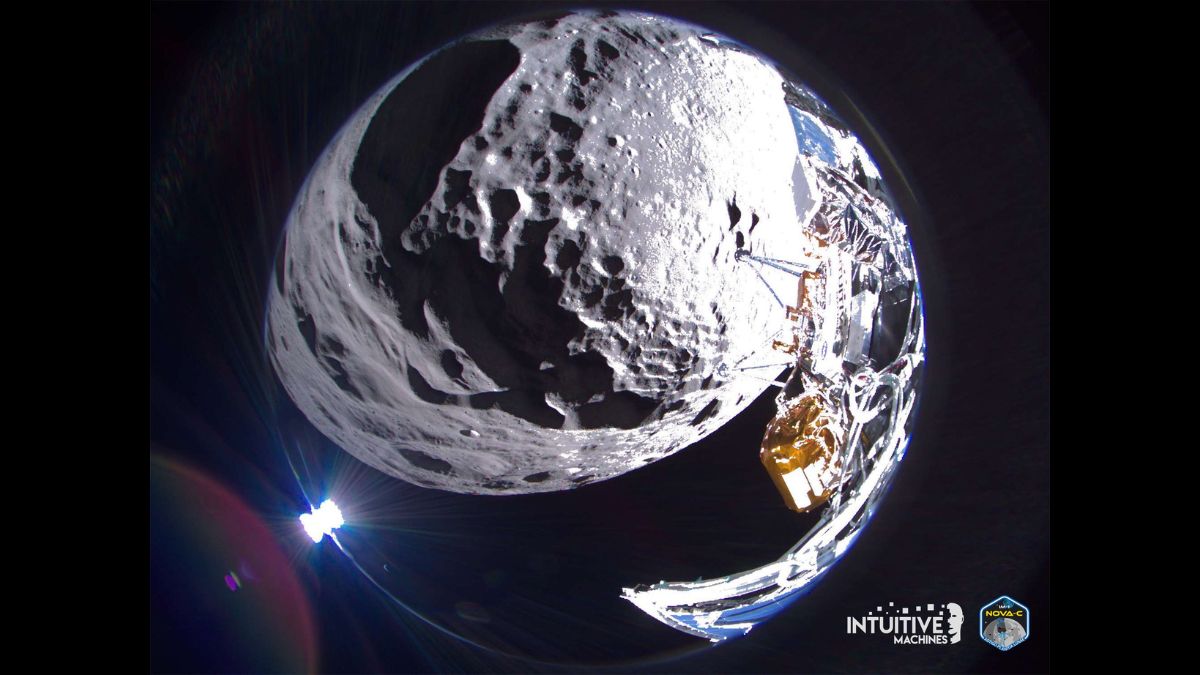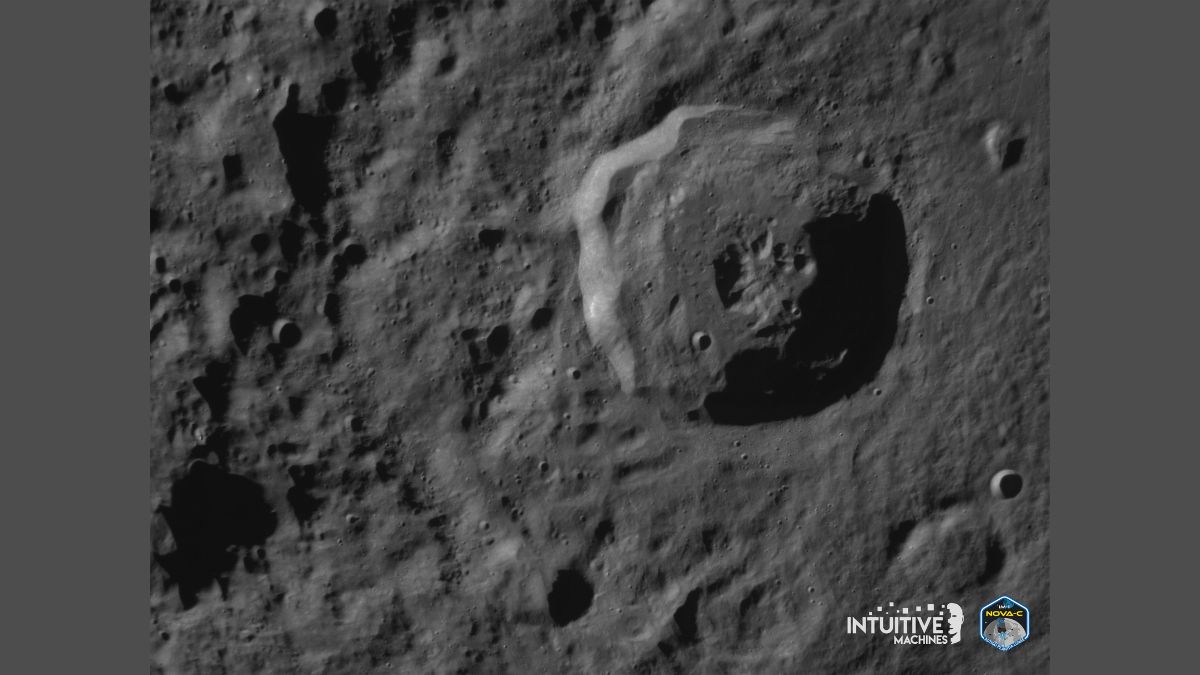‘Tipped Over On Landing’, But ‘Alive And Well’: Odysseus Moon Lander Remains Operational
Odysseus was placed at the Malapert A crater near the lunar south pole on February 23, 2024, marking the United States' return to the Moon for the first time in 50 years.

Odysseus, the Moon lander which landed on the lunar south pole on February 23, 2024, marking the United States' return to the Moon for the first time in 50 years, tipped over on landing. While the lander, built by Texas-based aerospace firm Intuitive Machines, is resting on its side, it is still operational, according to NASA. "Odysseus is alive and well," Intuitive Machines said in a mission update on X (formerly Twitter). Also known as NOVA-C, the lander has good telemetry (collection, transmission and measurement of data from remote sources) and solar charging.
Odysseus was placed at the Malapert A crater near the lunar south pole.
US becomes second country to reach Moon’s south pole, after India
The lander, equipped with five NASA payloads and commercial cargo, was launched atop a SpaceX Falcon 9 rocket on February 15, 2024, as part of the Intuitive Machines 1 Mission (IM-1). This also marks the first time a commercial lander has landed on the Moon.
Odysseus reached the Moon in eight days. Its lunar south pole soft landing has made the US the second country to reach that region, after India, which successfully soft-landed Chandrayaan-3 on August 23, 2023.
First, Odysseus was placed into an Earth orbit of size 185 kilometres x 60,000 kilometres. After this, translunar injection occurred. Following this, a manoeuvre placed Odysseus into a 100-kilometre lunar orbit.
Images of the Moon captured by Odysseus
Initially, flight controllers from Intuitive Machines had to perform troubleshooting to restore communications with Odysseus. Currently, the lander is sending data as flight controllers are commanding it to download science data.
By communicating with Odysseus, ground control teams collected information about the lander's latitude and longitude, overall health, and attitude or orientation.
Intuitive Machines has also shared an image of the Moon's Schomberger crater captured by Odysseus. This crater is located 200 kilometres from the intended landing site, at an altitude of about 10 kilometres.

On February 21, Odysseus's Terrain Relative Navigation Camera captured an image of the Moon's Bel'kovich K crater, which is located in the northern equatorial highlands of Earth's natural satellite.
The crater has mountains in the centre, and is 50 kilometres wide.

What will Odysseus do on the Moon?
During its mission life, the lander is expected to exhibit communication and navigation mode capabilities.
Odysseus’s payloads will study interactions between the lunar surface and plumes, which are clouds of gas. They will also perform radio astronomy experiments, and study how the lunar surface interacts with space weather.
Odysseus would have had a mission life of 14 Earth days had it not landed sideways. According to Intuitive Machines, flight controllers are expected to remain in contact with the lander till February 27, 2024.
The lander has a length of four metres, a width of 1.57 metres, and a lift-off mass of 1,908 kilograms. It has six standing legs.
Odysseus is equipped with solar panels which will allow it to generate 200 Watts of power on the lunar surface.
The main engine, placed at the bottom of Odysseus, required a force of 3,100 Newtons to fire up before landing on the Moon. It used liquid methane as fuel, and liquid oxygen as oxidiser.
NASA selected Intuitive Machines to build a lander as part of the space agency's Commercial Lunar Payload Services Initiative (CLPS), in which a commercial firm receives a contract.






































